Hongbenghe, a small village right at the border of China’s Yunnan province and Myanmar, has a number of woodpeckers. And most birders (though not all – see here for an exception) quite like woodpeckers, making it a good topic for a dedicated post.
They also received the seal of approval from the Audubon Society, which designated woodpeckers as keystone species for their crucial role in creating habitat suited to other woodland wildlife (source). Indeed, one study finds that the richness of woodpeckers is a reliable indicator of overall bird richness in most forest stands and conditions.
Partly, this is due to the role of woodpeckers as nature’s real estate developers (without the bankruptcies now common in China) which are described in detail in an online video, “Woodpeckers as Ecosystem Engineers”. Ornithologists call the species renting and buying homes from woodpeckers “secondary cavity nesters”.
The Greater Flameback has the looks of a classic cartoon woodpecker, which hopefully the species will see as a compliment from me.
Interestingly, the scientific name Chrysocolaptes guttacristatus (spot-crested) seems to only refer to the female …


… not to the red-crested male.

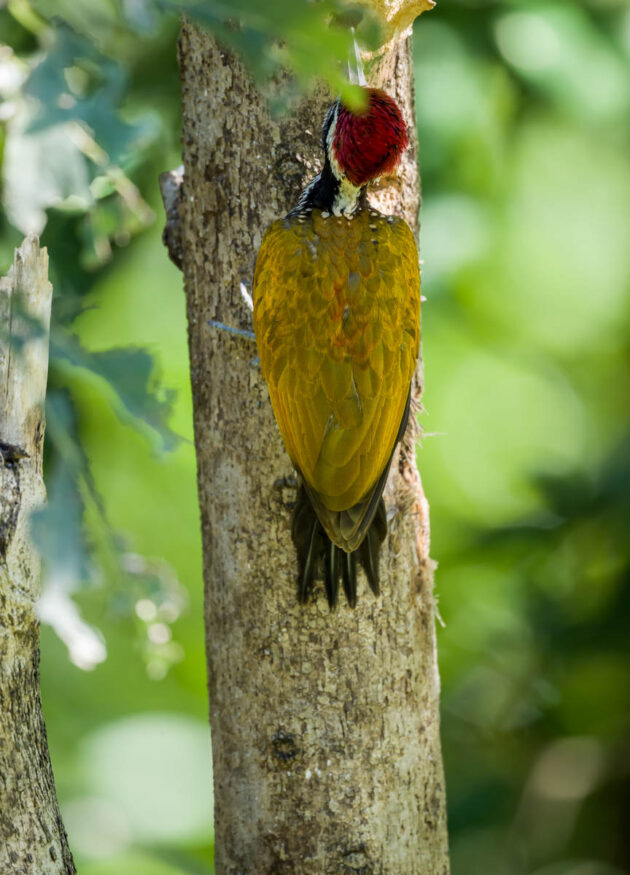
That is despite the male typically being dominant, as described in an observation of a family group: “The adult male displayed dominant behavior, did most of the drumming and made most of the calls”.

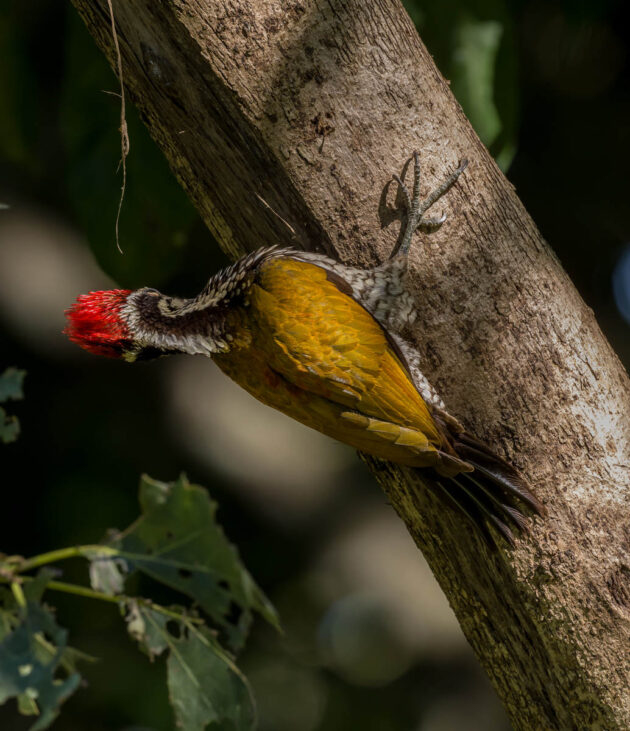
Encounters with other woodpecker species such as the Bay Woodpecker do not always look very harmonious.


The red neck of this Bay Woodpecker indicates that it is also a male.

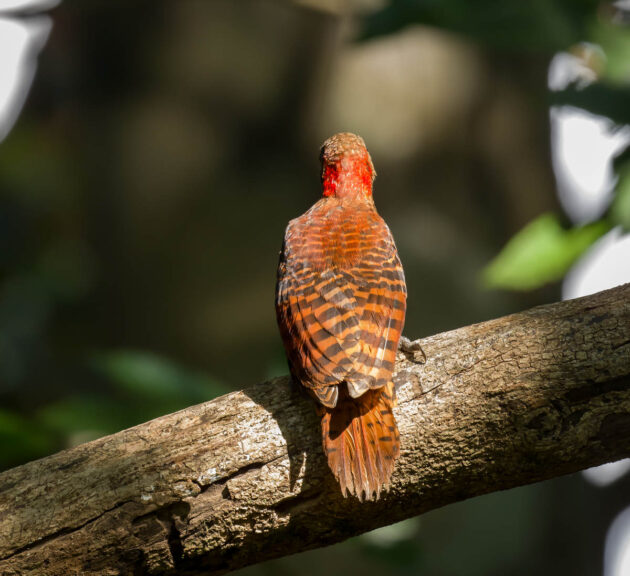
The species has an individualistic streak – partners maintain only loose acoustic contact but do not forage close to each other (source: HBW), which is different from the Greater Flameback which is usually found in pairs or families.


There is much more literature available on the Grey-headed Woodpecker – in particular, Finish ornithologists (with typical Finish-sounding names such as Pakkala, Kouki, Saari, or Mikusinski) seem to like studying it, presumably as it shortens the commute to their research work.

They look at topics such as nesting locations (“44% of all nesting attempts were in old cavities”, source) …

… their food in summer (ice cream, of course! … no, ant colonies) and winter (bark-dwelling insects – source) …

… or teach us new words such as “autolycism” (Use of the opportunities provided by the activities of another animal, without the bird becoming a parasite): Grey-headed Woodpeckers in Japan were found to feed in holes made by the much larger Black Woodpeckers after those had left the holes (source).
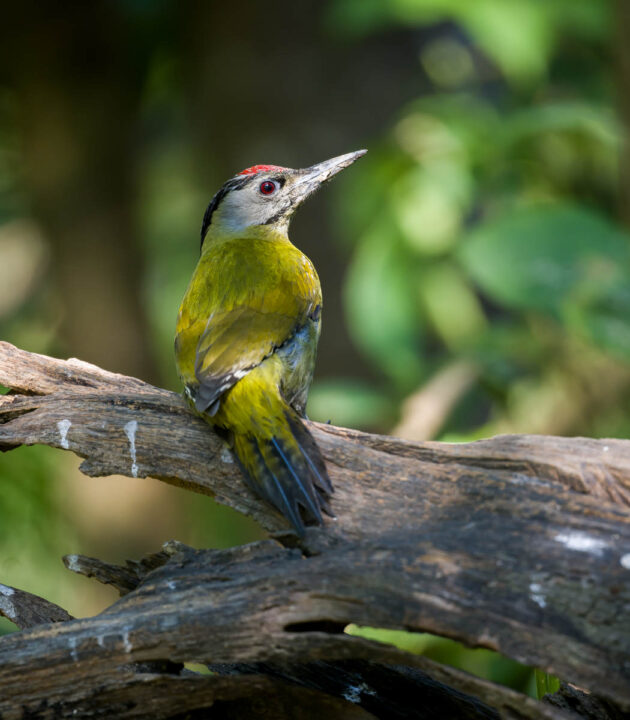
Shame on Grammarly: It does not know the word autolycism and tries to correct me. To be fair, I did not now it either.

And yes: again, the red cap indicates the male bird.

The Greater Yellownape uses a different identification scheme: the throat of the male is yellow …

… while the female has a brownish throat.
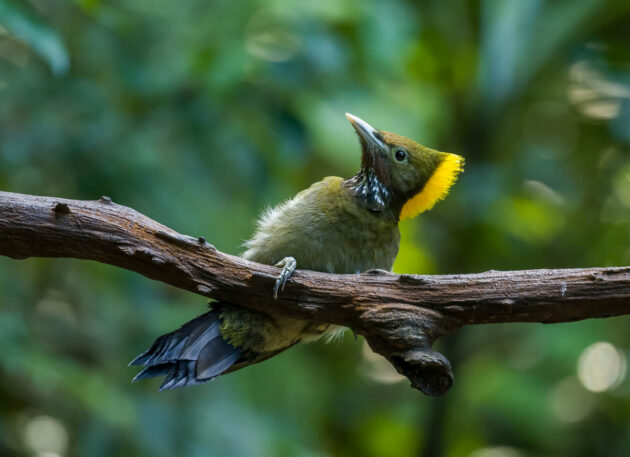

Both the Greater Yellownape and the Lesser Yellownape participate in mixed-species flocks – within these flocks, they showed less vigilance, an effect that increased with the size of the flock (source). Kind of like a neighborhood watch approach – and of course, less checking for predators means more time to find food. Of course, if these were US birds, they would be carrying guns as well.

Here with the Lesser Yellownape, we are back to the standard woodpecker sex identification system: the male on the right in the photo below has some additional red parts.

Despite both yellownapes having just that – a yellow nape – they are not particularly closely related.

Finally, the Stripe-breasted Woodpecker has the rather unconvincing scientific name Dendrocopos atratus, with atratus meaning “clothed in morning” (or maybe “clothed in black”).

If I tell you that this woodpecker follows the standard woodpecker sex identification scheme …

… then I am sure you can sex the birds in these photos.

And suppose you are wondering how woodpeckers avoid brain injury (setting them apart from many players of US Football). In that case, there is a good paper on this here – written not by an ornithologist but by a professor of Mechanical and Aerospace Engineering and a Postdoctoral Scholar of Orthopedic Surgery.
Source link

